When it comes to lighting, it’s all too easy to overlook the planning stage and simply shop for styles we like - but it's worth taking the time to work out exactly what kind of lighting scheme will be serve your space.
Thoughtfully-placed lamps, spot lights, pendants and wall lights will create just the right atmosphere while also doing exactly what you need them to do.
Good lighting is always worth an investment but you can pick up some bargains when you want to add extra illumination with side lamps and pendant shades, which can be swapped for something new when you fancy a change.
Ready to get illuminated? Read on to discover our lighting ideas for every room!
Kitchen lighting ideas
In the kitchen, you’ll want task lighting over the work surfaces, cooker, hob, sink and any other food preparation areas or cooking stations.
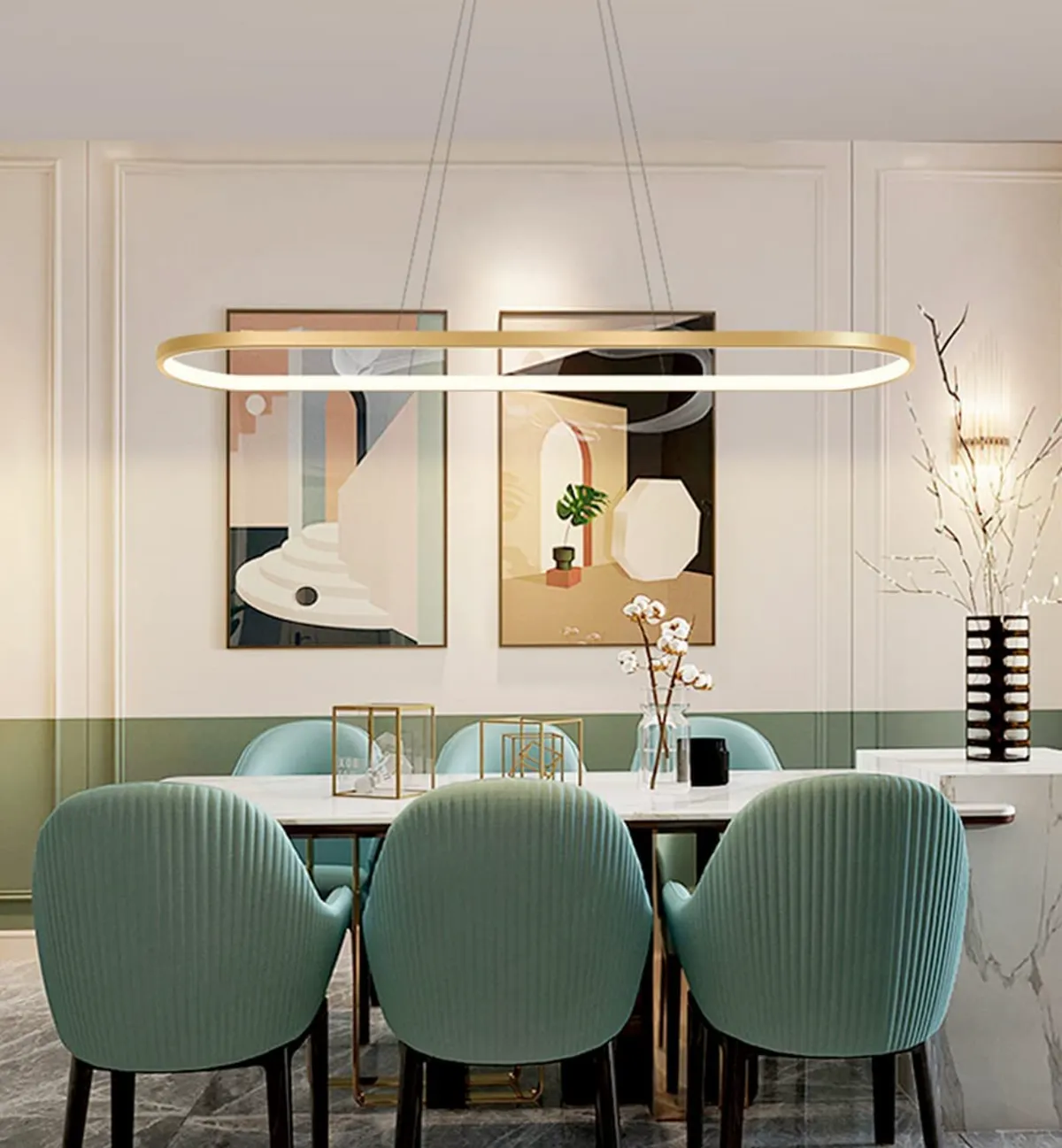
This should ideally be combined with overhead spotlights or recessed lights for all-round illumination with a pendant or row of pendants over the dining table or island. A series of hanging pendants is a classic - go with an odd number for maximum impact - but don't be afraid to think outside the box. The oval-shaped frame pendant from Bellastein shown above, available at Amazon, is a real statement feature which still offers all the dining table illumination you'd get from hanging pendants. Available in gold, white and black finishes, the LED lighting can be turned up or down via the included remote control.
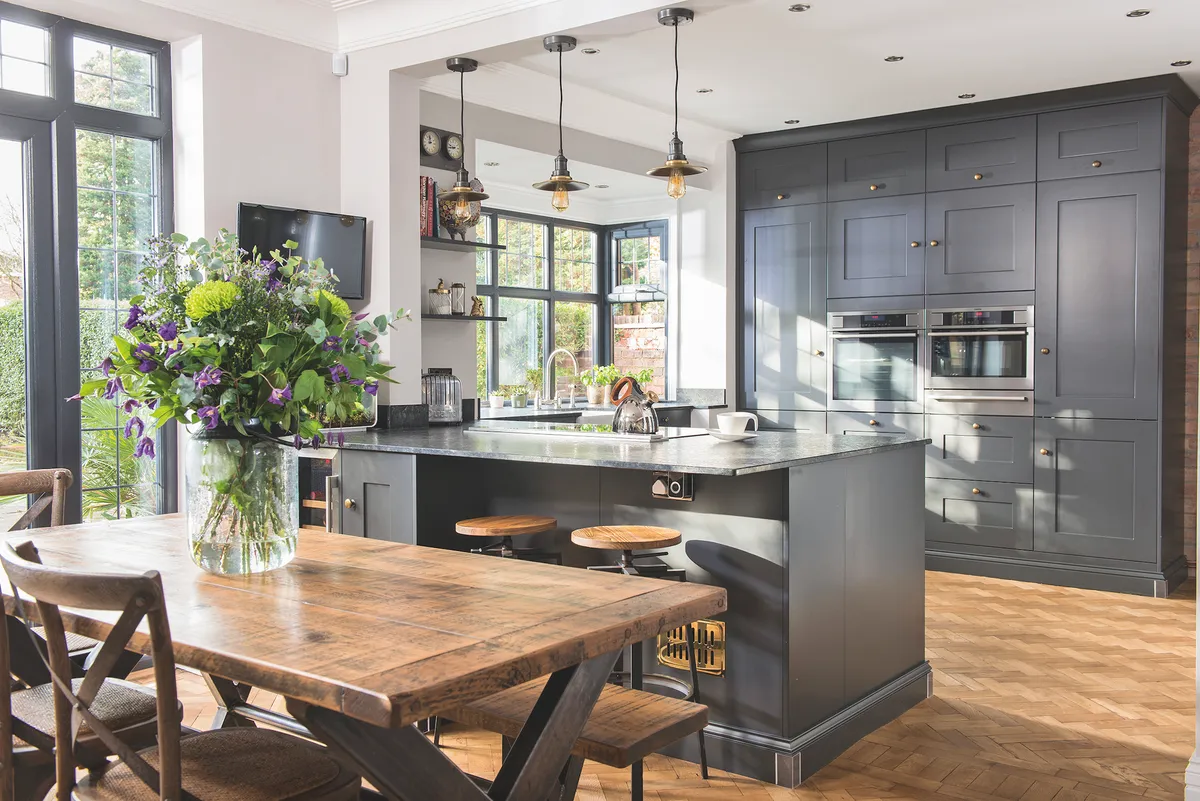
- Buy now from Industville (£79)
Rise and fall pendants allow you to alter the intensity of the light while dimmer switches offer flexibility at different times of the day.
For more in-depth advice on lighting your kitchen, check out these six ideas for transforming your kitchen with lighting.
Living room lighting ideas
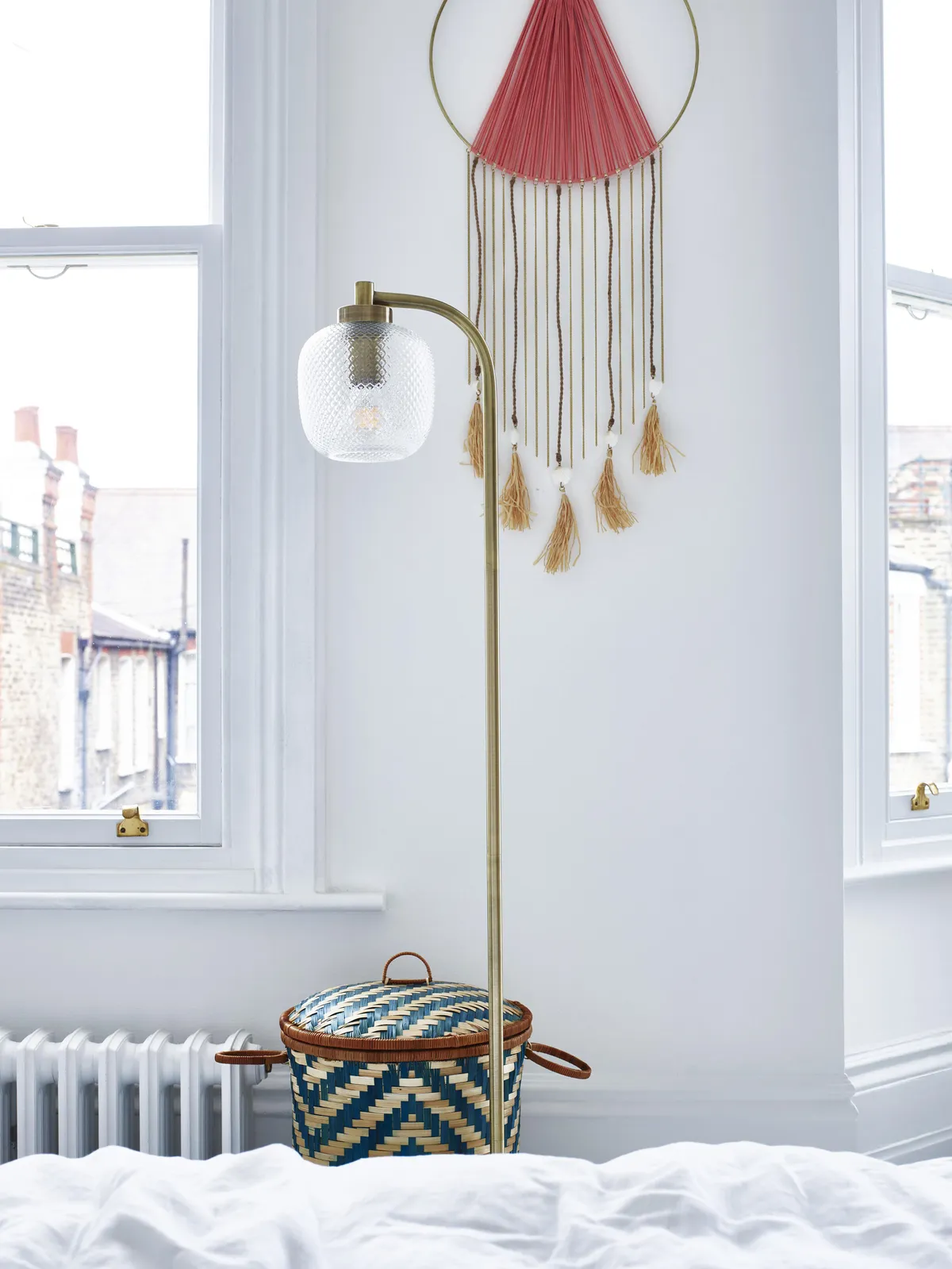
- Buy now from Oliver Bonas (£135)
In the living room the layered effect works particularly well. Style a floor-standing lamp next to an armchair for a cosy corner, a cluster of lamps on side tables and sideboards and perhaps a few wall lights for when you want a gentle glow while relaxing in the evenings.
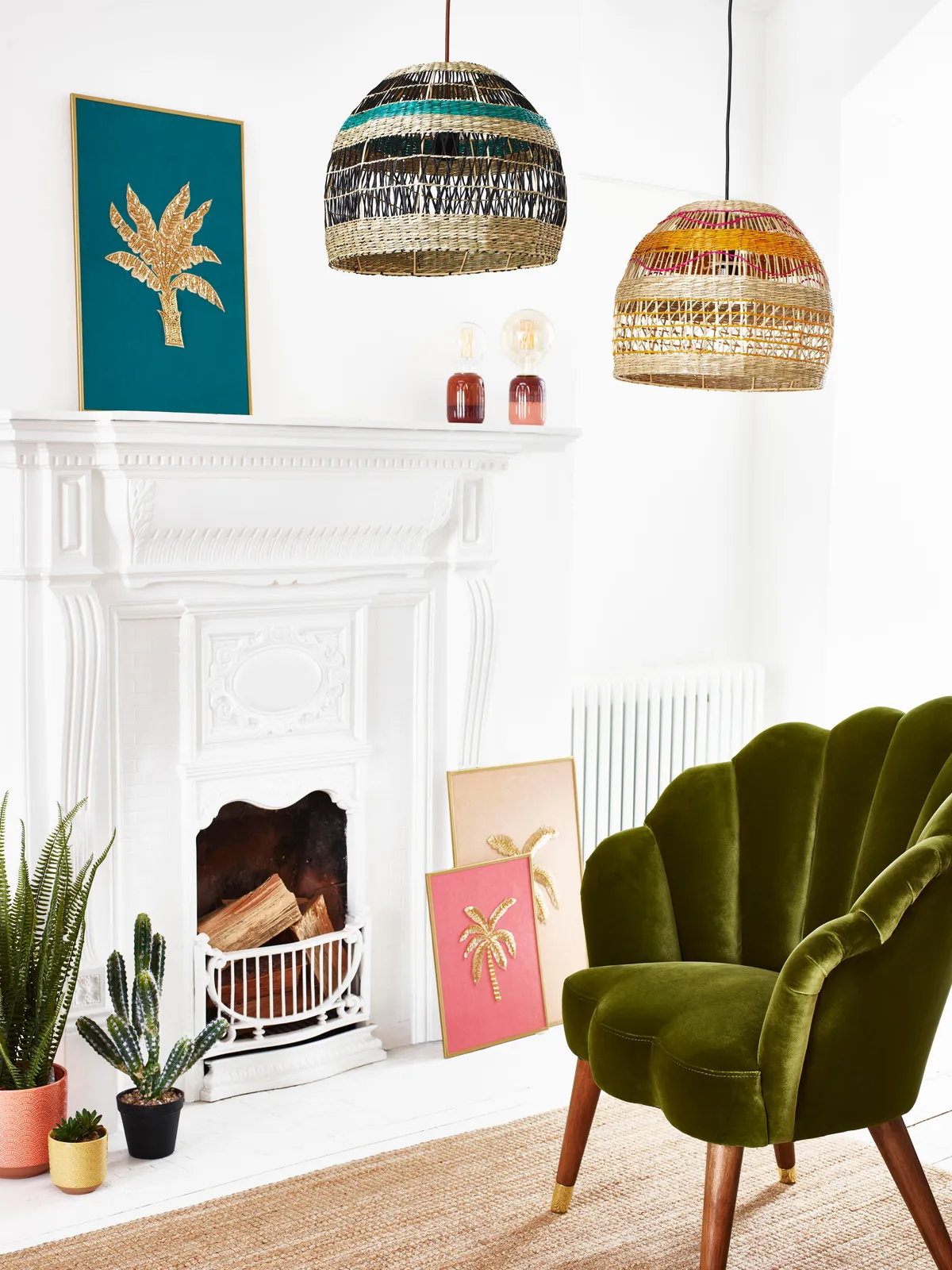
- Buy now from Oliver Bonas
The living room is also the perfect place to show off an eye-catching feature ceiling light. That doesn't need to mean something dramatic - if your style is more laid-back boho, consider something like the seagrass pendant shade from Oliver Bonas shown above.
Bedroom lighting ideas
In the bedroom, it’s all about crafting a calming atmosphere, perhaps pairing an overhead pendant with a task light or two for reading.
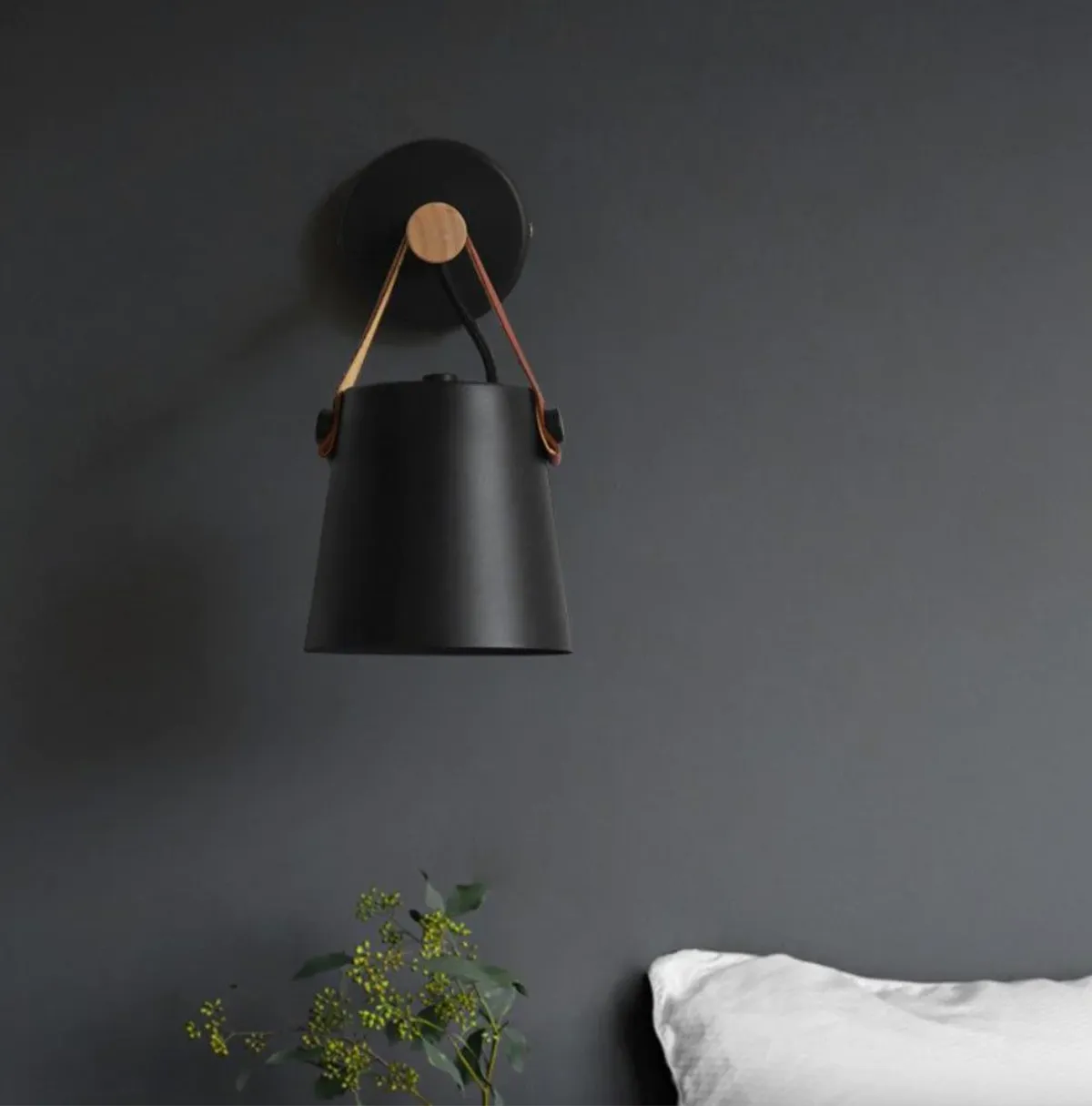
A wall sconce is ideal for bedroom lighting, casting a smaller, softer glow than an overhead light. We love the black metal shade, leather-look strap detail and wooden fittings of the wall sconce light shown above, available at Amazon. The unusual design gives it a contemporary but cosy Nordic vibe which would also look great in an industrial bedroom decor scheme. Also available in white, which we think would be more at home in a light and bright Scandi-style living room, it's compatible with any E27 screw base bulb.
Adjustable table lights are ideal for reading and directional clip-ons are great for headboards and shelves and can easily be retro-fitted.
Consider lights with a dimmer so you can create a more intimate mood and look for warm bulbs rather than harsh effects.
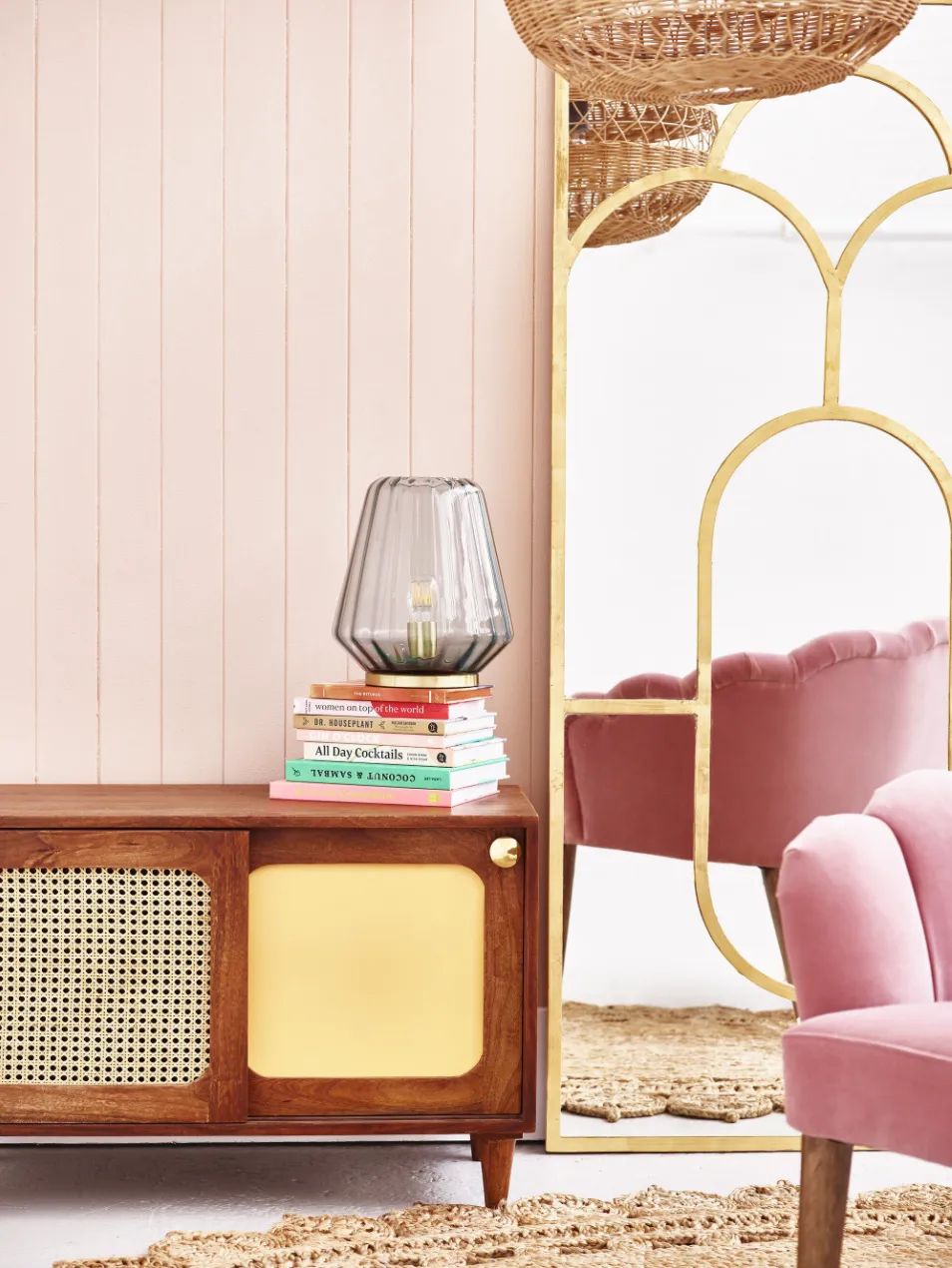
- Buy now from Oliver Bonas (£98)
With hybrid working the new normal for many of us, make sure any desk space includes efficient task lighting to prevent eye strain.
Lighting a hallway
In hallways and on landings, it’s all about making your home warm and welcoming. As the hall is the first impression a visitor has of your home, you want to hit the right note with a statement piece that is in keeping with your home’s character.
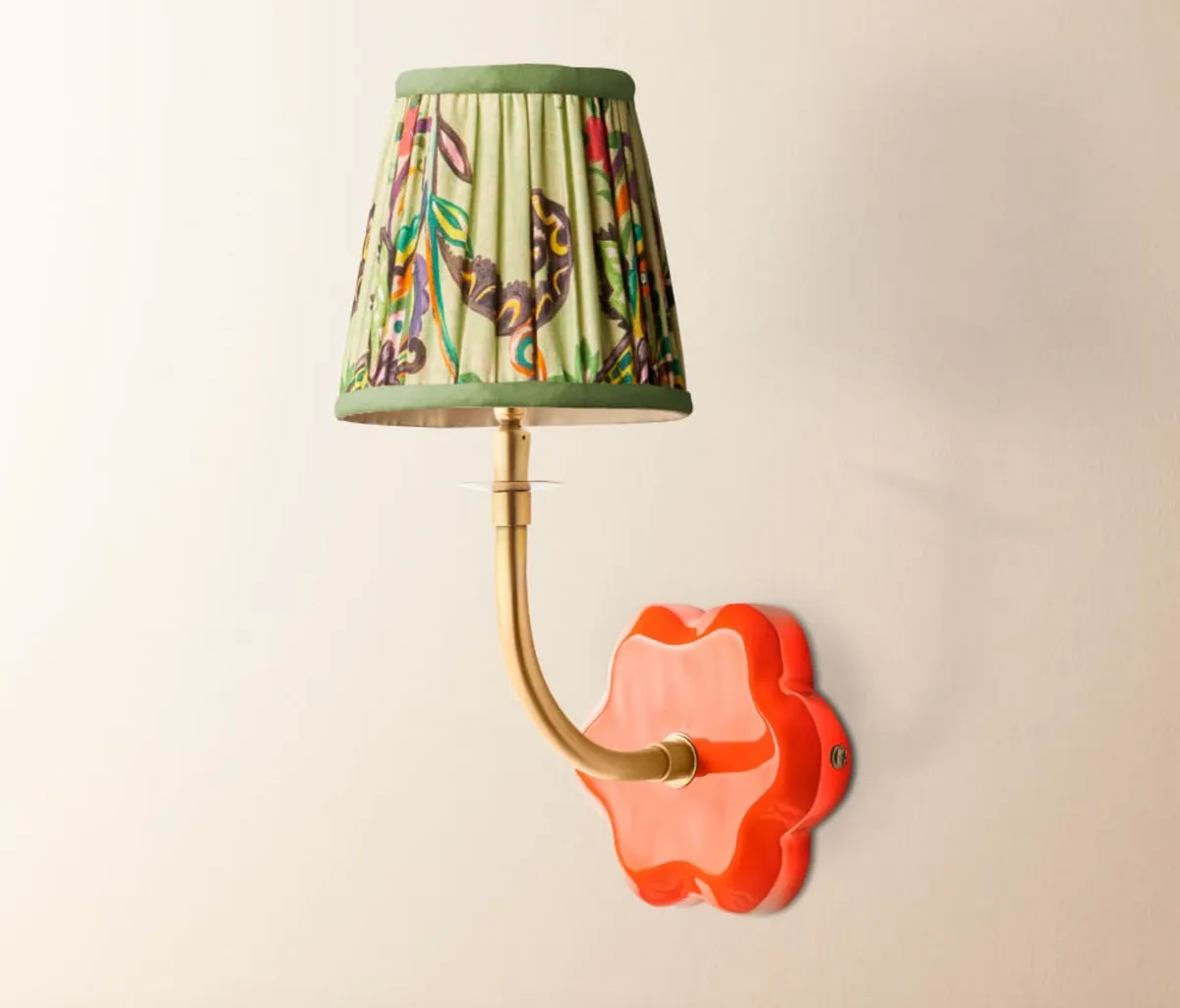
- Buy now from Pooky (£55)
If you're working with a narrow hallway, consider a couple of wall sconces to add light along the length of the hall.
Bathroom lighting ideas
When it comes to lighting the bathroom, atmospheric wall sconces and LED bathroom mirrors are much easier on the eyes first thing in the morning and last thing at night than harsh overhead lighting.
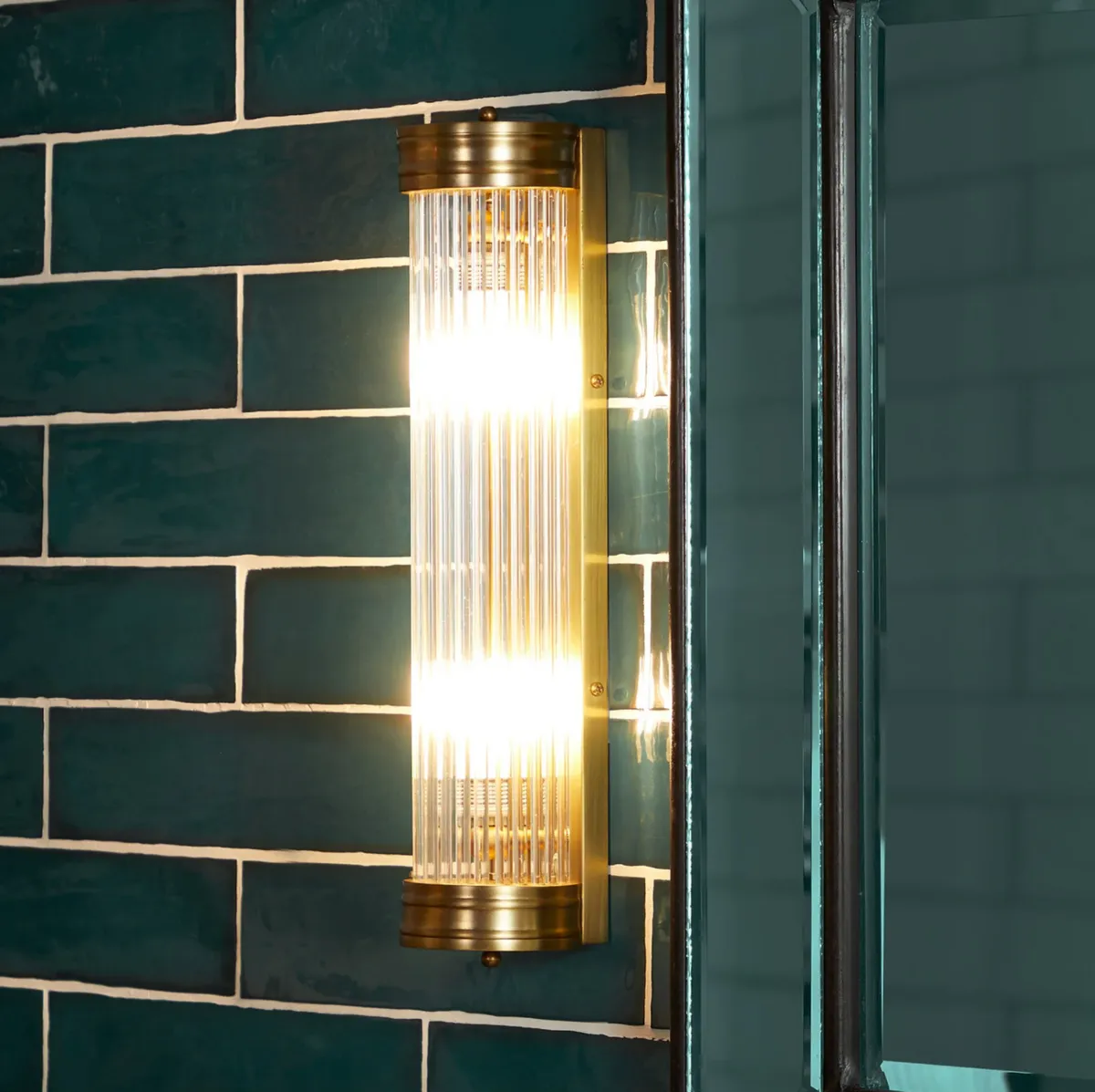
- Buy now from Pooky (£145)
Not all lights are suitable for bathroom use, and those which are will be clearly marked with an IP rating, which indicates how resistant the light is to dust and water.
Bathrooms are divided into zones when it comes to lighting and each zone determines the type of lighting and IP rating that can be installed.
Bathroom zones
- Zone 0 is the space in the bath or shower itself, so any lighting here must be of low wattage and be rated at least IP67 as well as immersion-proof.
- Zone 1 is the area directly above the bath or shower to a height of 2.25m from the floor. Lights in Zone 1 must have a minimum rating of IP45 but it’s generally accepted that IP65 is most suitable.
- Zone 2 stretches 60cm outside the perimeter of the bath or shower to a height of 2.25m from the floor. Here, a rating of at least IP44 is needed. The space around the basin within a 60cm radius of any tap is also Zone 2.
How to choose the right lightbulb
Baffled by the choice of bulbs available? Here’s our buyer’s guide:
- Incandescent bulbs are the most common, which you find in lighting shops, DIY stores and supermarkets. They don’t last long and use more energy than more modern designs.
- Fluorescent lamps are more complex, use less energy and can last longer but are difficult to dispose of as they contain mercury.
- Compact fluorescent lamps produce the same amount of light but with less power.
- Halogens are a better version of incandescent bulbs. They are smaller with higher luminosity.
- LEDs (light emitting diodes) are different, as they don’t have a filament that eventually burns out. Instead, they work by passing a current through a semi-conductor. This means that LEDs are much more efficient than halogens, consuming 85% less energy.
- Using LEDs will lower your electricity bills and last over 10 times longer. LEDs are more expensive but as they last longer and reduce running costs, it is an investment worth making.
Light bulb brightness
When choosing the level of brightness, look for the lumens. Bulbs aren’t measured in wattage any longer – now it’s all about the lumens.
- Lumens measure brightness while watts measure energy output.
- A 25W incandescent bulb equals 220+ lumens; 40W equals 400+; 60W is 700+; 75W is 900+ and 100W is equivalent to 1,300+.
- As a guide, if you normally buy 60W incandescent bulbs, which produce around 700-800 lumens, consider a lower energy alternative such as a 42W halogen, 12W compact fluorescent lamp or a 10W LED bulb instead.
Feeling inspired? Why not check out our guide on how to make the most of natural light in your kitchen or Abigail Ahern's advice on lamps, side lights and how to use artificial flowers. For fun lighting options, see our guide to the best cheap chandeliers you can buy today.
